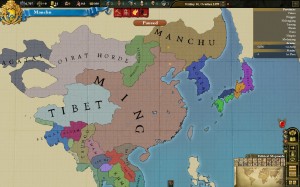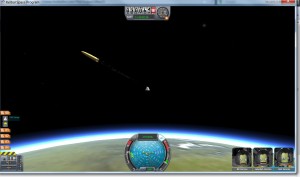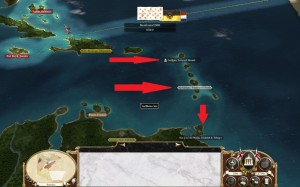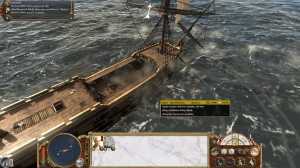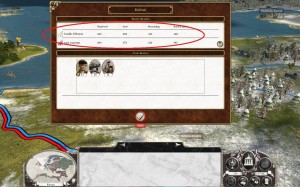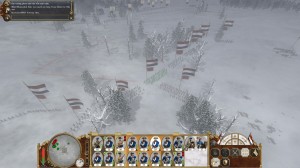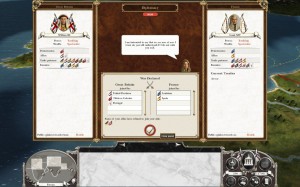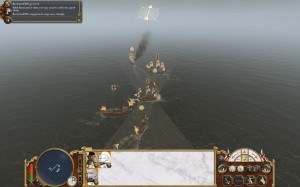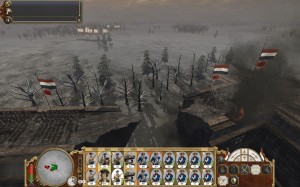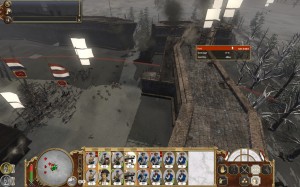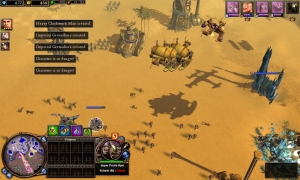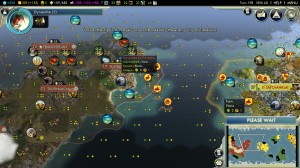
Last night, I sat down to play Civilization V for the first time in most of a year. There have been a lot of patches in that time, and I’d grown pretty rusty. How well does it stand the test of time?
What happened during the game
I played as Siam on a Tiny map (four players, eight city-states), Continents, on King level. As it turned out, the other three players all ended up sharing the main continent while I had a large island/small continent to myself (big enough for three of my cities plus one city-state, and I could have shoehorned another city or two in there if I really wanted to). Throughout the game, I followed my classic Civ play style by building a small but rich and technologically advanced nation, and eventually won a diplomatic victory.
However, my game wasn’t wholly peaceful. Montezuma, just across the sea from me, spent the game slowly gobbling up the other civs and city-states on the main continent. He knocked out Japan and one of my allied city-states, as well as grabbing some territory from Russia. So in the modern era, I decided to do something about it. I somehow made my way to Electronics (which allows mechanised infantry) when all the other AI players were around a generation or two behind militarily, so after training a small force of mechanised infantry and constructing a few battleships, I invaded the Aztecs*.
And I pulled it off. Between my technological superiority, the Aztec army being at the wrong end of the continent fighting the Russians, and my city-state allies gnawing at the Aztecs’ flanks, I went through Montezuma’s heartland like a hot knife through butter. Mounting unhappiness from my conquests, and the need to rest the troops, made me settle for a peace treaty in which I took all of Montezuma’s cities except for the ex-Japanese Kyoto; that spiked my unhappiness even further, so I donated several of the Aztec border cities to my ally Russia. With the exception of a second, brief war later on that saw Russia gobble up the Aztec remnant, after that it was pretty much just a countdown to the diplomatic victory.
My observations
The naval AI really is broken: No invasions, no colonisation, minimal fleets. This meant once I had wiped the barbarians off my continent, I could safely neglect my military until it was time to invade the Aztecs. When that occasion came, I encountered absolutely no naval resistance…
… but I wouldn’t be so quick to rag on the land AI: My ground war didn’t last long , and mostly consisted of me besieging cities defended by entrenched artillery rather than fighting Montezuma’s armies in the field, so I can’t comment on how good the AI’s unit deployment is. However, judging by the large, artillery-supported armies I saw the Aztecs and later Russia pushing around, their sheer weight of numbers would have given me a much harder time if I’d spawned on the main continent.
Improved build times: Even on Quick speed, IIRC it took ages to build anything in the earlier versions of Civ V. In contrast, build times feel very reasonable now.
At first glance, I like the use of empire-wide happiness as a check on conquest: … although this really is only a first glance, since it only arose for me towards the end of this game and I don’t remember it being much of an issue when I originally played.
Diplomacy still feels rudimentary, but it has its moments: Russia and I were best buddies for most of the game, but once the fall of the Aztecs left the two of us sharing a land border as the last civs standing, Catherine’s attitude cooled very quickly. Shades of the Cold War…
My overall conclusions haven’t changed. Civ V was decent to start with, and it’s better than it was a year ago, mostly due to the faster build times. But while I had fun, I still don’t consider it a great game. Even without the dysfunctional naval AI, the patches have done nothing to address my fundamental gripes with the game. In particular, diplomacy and the lack of religion make it feel more soulless than Civ IV or even Alpha Centauri (note, for example, this podcast discussion on the importance of faction personalities in that game). Back onto my Steam shelf it’ll go for now, I think…
* Appropriately enough, the great general who spawned after my first couple of victories was named “Hernan Cortes”.

